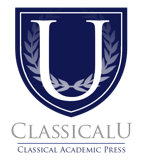Back to Course
The Art of Poetry
0% Complete
0/0 Steps
-
Conversations
Conversation 1: Why Study Poetry? (Preview Content)1 Topic -
Conversation 2: Understanding Poetry through Poems2 Topics
-
Conversation 3: Poetry and Faith2 Topics
-
Lessons & ActivitiesLesson 1: Images (Preview Content)2 Topics|1 Quiz
-
Activity 1: Images (Preview Content)
-
Lesson 2: Metaphor2 Topics|1 Quiz
-
Activity 2: Metaphor1 Topic
-
Lesson 3: Symbols3 Topics|1 Quiz
-
Activity 3: Symbol1 Topic
-
Lesson 4: Words2 Topics|1 Quiz
-
Activity 4: Words1 Topic
-
Lesson 5: Sound2 Topics|1 Quiz
-
Activity 5: Sound1 Topic
-
Activity 6: Rhythm1 Topic
-
Lesson 6: Rhythm2 Topics|1 Quiz
-
Lesson 7: Shape2 Topics|1 Quiz
-
Activity 7: Shape1 Topic
-
Lesson 8: Tone2 Topics|1 Quiz
-
Activity 8: Tone1 Topic
-
Lesson 10: Verse Forms2 Topics|1 Quiz
-
Activity 10: Verse Forms1 Topic
-
Lesson 11: Shaping Forms2 Topics|1 Quiz
-
Activity 11: Shaping Forms1 Topic
-
Lesson 12: Emily Dickinson—A Case Study in Form2 Topics|1 Quiz
-
Activity 12: Emily Dickinson1 Topic
-
Lesson 13: Open Verse3 Topics|1 Quiz
-
Activity 13: Open Verse1 Topic
-
Lesson 14: Walt Whitman—A Case Study in Open Verse2 Topics|1 Quiz
-
Activity 14: Walt Whitman1 Topic
-
Lesson 15: Narrative Poems2 Topics|1 Quiz
-
Activity 15: Narrative Poems1 Topic
-
Growing Student Interest in PoetryLesson 16: Growing Student Interest in Poetry2 Topics
-
End of Course TestEnd of Course Test: Art of Poetry1 Quiz
Lesson 4 of 33
In Progress
Lesson 1: Images (Preview Content)
In this session, join Christine Perrin for a roundtable discussion with four students about the use of images in poetry.
Discussion topics
- (02:45) How would you define an image?
- (11:30) How do images work in poems?
- (14:30) Reading and discussion of The Panther
- (19:45) Is there anything else to add to the observation of the basic picture that we are looking at? How is the image being made into an experience?
- (22:00) How do you know that there is some empathy on the part of the observer towards this cat?
- (23:30) What do you observe about the ending of the lines and the kind of punctuation that is being used?
- (25:40) What is happening in the second stanza, and why does the punctuation aid the content?
- (30:25) Rilke creates and image, which is symbolic, which is so powerful that as readers we enter into his imagination, and we fill in some of those blanks.
- (31:00) Can you think of cages that culture can put people in?
- (35:30) Reading and memorizing of Dust of Snow by Robert Frost
- (36:35) Are there any vocabulary words that we need to define?
- (39:05) What are we looking at, touching, and feeling?
- (41:40) Has a little thing ever pierced your mood or your day, and lifted you up?
- (43:00) Are there any other comments about imagery and its relationship to our emotional lives, or its ability to stop time for a little bit?
- (44:15) If we were going to over interpret this poem, what direction would we try to take the conversation?


